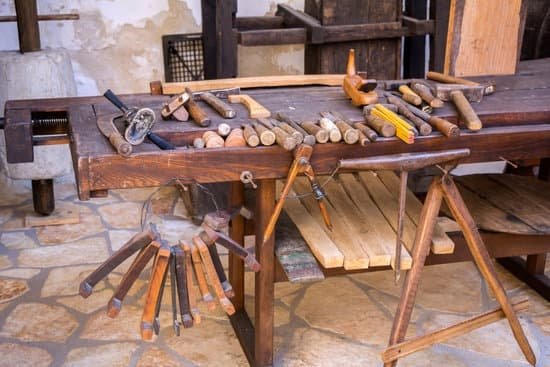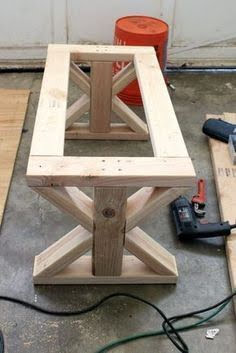Woodwork, a compound word? Understanding the concept of compound words is essential in comprehending the intricacies of language. In this article, we delve into the question of whether woodwork can be classified as a compound word. Examining its meaning and components, we explore the importance of understanding and identifying compound words in English.
Compound words are formed by combining two or more individual words to create a single unit with its own distinct meaning. It is crucial to grasp their usage as they contribute to the richness and flexibility of language. Understanding compound words allows us to effectively communicate and comprehend complex concepts in various fields such as science, literature, or everyday conversation.
Woodwork, a commonly used term with potential interpretations related to woodworking activities or structures made from wood, prompts an exploration into its classification as a compound word. By dissecting it into its constituent parts, analyzing its usage in different contexts, and delving into linguistic debates surrounding it, we aim to shed light on whether woodwork truly fits the criteria for being considered a compound word in the English language.
Throughout this article, we will investigate various aspects related to compound words and specifically examine how woodwork fits within this category. By doing so, we hope to deepen our understanding of language structure while appreciating the complexity and versatility afforded by compound words in communication.
Definition of Woodwork
Woodwork is a term that is widely used and can have different interpretations depending on the context. In general, woodwork refers to the art or skill of working with wood to create objects or structures. It can encompass a wide range of activities, including carpentry, joinery, cabinetry, and woodworking.
Carpentry specifically refers to the construction, repair, and installation of wooden structures or frameworks. This may involve building houses, furniture, or other wooden items. Joinery focuses on crafting joints and fitting pieces of wood together without the use of nails or screws. Cabinetry involves designing and creating cabinets for storage purposes.
Woodworking is a broader term that encompasses all these disciplines and more. It includes any activity that involves working with wood and manipulating it to create functional or decorative objects.
In addition to these specific interpretations, woodwork can also refer to the process of preparing raw lumber for use in construction or woodworking projects. This typically involves cutting, shaping, smoothing, and finishing the wood to make it suitable for its intended purpose.
Overall, the definition of woodwork varies depending on the context in which it is used. However, in all cases, it involves working with wood and utilizing various techniques and skills to shape it into desired forms. Whether it is constructing furniture, building structures, or preparing raw materials, woodwork encompasses a wide range of activities within the realm of woodworking.
Identifying Compound Words
Characteristics of Compound Words
Compound words are formed when two or more words are combined to create a new word with a different meaning. These words often have a hyphen or are written together without any spaces, and the combination of the individual words creates a new, unified concept. Compound words can be found in various fields and have become an integral part of the English language.
One characteristic of compound words is that they retain the meaning of their individual components, even though the combination creates a unique meaning. For example, the compound word “passerby” combines the individual words “pass” and “by.” Although the combination forms a single concept referring to someone who is passing by, both words maintain their meanings within this new construct.
Another characteristic of compound words is that they can be created through different linguistic processes. Some compound words are formed through compounding, which involves combining two separate full words (“hairbrush”). Other compound words are created through prefixes or suffixes added to an existing word (“unbreakable” or “movement”).
Formation of Compound Words
There are three main ways in which compound words are formed: closed compounds, open compounds, and hyphenated compounds.
Closed compounds consist of two or more individual words that are joined together without any spaces or punctuation marks. Examples include “bedroom,” “football,” and “birthday.” In these cases, the combination of the two individual terms results in a completely new meaning.
Open compounds consist of two separate but related terms that are written as separate entities without any punctuation marks. Examples include “ice cream,” “high school,” and “full moon.” While there is a clear connection between the two terms in open compounds, they still function as distinct entities.
Hyphenated compounds join two or more separate terms together using hyphens (-). Examples include “well-being,” “self-esteem,” and “mother-in-law.” The use of hyphens in these compound words allows for clarity and ease of understanding.
Understanding the characteristics and formation of compound words is crucial in recognizing these formations in the English language. By doing so, we can enhance our comprehension of words and their meanings, as well as improve our overall communication skills.
Compound Words in the English Language
Compound words play a significant role in the English language, as they allow us to express complex ideas and concepts by combining multiple words into a single unit. These words are formed by joining two or more separate words together, often with a hyphen or without any punctuation. Understanding compound words is essential for effective communication and comprehension in various fields, including food, sports, and technology.
In the realm of food, compound words are commonly used to describe dishes, ingredients, and cooking techniques. For example, we have “chocolate chip,” “peanut butter,” and “ice cream.” These compound words effectively convey the specific type of chocolate, nut spread, or frozen treat being referred to.
In sports terminology, compound words help us express different positions, plays, and equipment used in various athletic activities. Examples include “quarterback,” “basketball,” and “goalkeeper.” Each of these terms combines two separate words that describe a unique aspect of the sport.
In the ever-evolving world of technology, compound words also play a crucial role in describing devices, software applications, and digital processes. Words like “smartphone,” “internet,” and “software” are all compound words that succinctly describe the products or concepts they represent.
These examples highlight how compound words are utilized across different domains to facilitate clear communication within specific contexts. By understanding common compound word formations in fields such as food, sports, and technology, individuals can enhance their language skills and effectively navigate these areas of expertise.
Analyzing the Word “Woodwork”
Woodwork is a term commonly used to refer to the crafting or construction of items from wood. In order to determine if woodwork qualifies as a compound word, it is important to break down the term and examine its individual components.
When analyzing the word “woodwork,” we can see that it is made up of two separate words: “wood” and “work.” The word “wood” refers to the material itself, while “work” refers to the activity or process of crafting or building something.
According to the definition of compound words, they are formed by combining two or more words together to create a new word with its own meaning. Compound words can be formed in different ways, such as combining two nouns (e.g., watermelon), a noun and an adjective (e.g., blackboard), or a verb and an adverb (e.g., cutthroat).
In the case of woodwork, we have combined the noun “wood” with the noun “work.” This combination creates a new word that specifically refers to the act of working with wood. Therefore, based on these characteristics, it can be argued that woodwork does qualify as a compound word in the English language.
| Word Component | Definition |
|---|---|
| Wood | The material derived from trees, typically used for construction or crafting purposes. |
| Work | The act or process of crafting, constructing, or creating something. |
By breaking down and examining the components of woodwork, we can better understand its meaning and usage in various contexts. Understanding compound words like woodwork allows us to effectively communicate and interpret information in written and spoken language related to woodworking activities.
Usage and Context
In various contexts, the term “woodwork” is commonly used to refer to activities or objects related to working with wood. Woodwork can be seen as a broad term that encompasses different aspects of woodworking, such as carpentry, joinery, and cabinetmaking. It is often used to describe the process of crafting or creating items using wood, as well as the final products themselves.
The use of the term “woodwork” is not limited to any specific field or industry. It is found in various contexts, including construction, furniture making, interior design, and even art. For example, in the construction industry, woodwork typically refers to the process of installing wooden elements such as doors, windows, staircases, and moldings. In furniture making and cabinetry, woodwork represents the techniques used to shape and assemble wooden pieces into functional and aesthetic items.
The classification of “woodwork” as a compound word does not significantly affect its usage in different contexts. Whether considered a compound word or not, its meaning remains consistent in relation to activities and objects involving wood. However, understanding its classification can provide insights into how compound words are formed and recognized in language. By examining why some words are considered compounds while others are not, we gain a deeper understanding of language structure and patterns.
| Examples | Context |
|---|---|
| Carpentry | Construction |
| Cabinetmaking | Furniture making |
| Woodworking tools | D.I.Y & Hobby |
| Woodwork sculpture | Art |
Linguistic Debate
The classification of woodwork as a compound word has been a subject of linguistic debate among experts and scholars. Some argue that woodwork is indeed a compound word, while others believe it falls into a different category of word formation.
Those who support the classification of woodwork as a compound word argue that it meets the characteristics and criteria for being classified as such. A compound word is formed by combining two or more individual words together to create a new meaning. In the case of woodwork, it is formed by combining the words “wood” and “work” to refer to various crafts or activities involving wooden materials. Therefore, according to this view, woodwork can be considered a compound word.
On the other hand, some linguists suggest that woodwork does not meet the traditional requirements for being classified as a compound word. They argue that true compounds are created when two individual words lose their separate meanings and combine to form an entirely new concept. In this sense, woodwork does not fit this definition because both “wood” and “work” maintain their own distinct meanings within the term.
Moreover, there are differing views on whether certain types of words, such as technical terms or jargon specific to certain fields like woodworking itself, should be subject to the same rules for forming compound words. Some argue that these specialized terms should be treated differently due to their unique usage and context within specific domains.
Overall, the linguistic debate surrounding woodwork’s classification as a compound word highlights differing perspectives on how compounds are formed and defined in the English language. While some arguments support its classification based on traditional criteria, others challenge these requirements and emphasize contextual considerations instead.
Conclusion
In conclusion, after a thorough examination and analysis of the term “woodwork” and its components, it can be determined that woodwork is indeed a compound word in the English language. A compound word is formed when two or more words combine to create a new word with its own distinct meaning. Woodwork meets this criterion as it combines the words “wood” and “work” to refer to a specific type of craftsmanship that involves working with wood.
Throughout history, woodwork has played a significant role in various industries and fields. It is used in construction, furniture making, carpentry, and many other areas where wooden materials are involved. The use of woodwork as a compound word accurately captures the essence of this specific craft and its connection to working with wood.
Although there may be debates or controversies surrounding the classification of woodwork as a compound word, it is important to consider how language evolves over time. The classification of certain words may change based on new interpretations or understandings. However, based on the current understanding of compound words and their formation, woodwork fits the criteria and should be considered part of this linguistic category.
Frequently Asked Questions
Is woodwork one word or two?
Woodwork is considered to be one word. When referring to the process of working with wood or creating wooden objects, it is typically written as a single entity.
Woodwork encompasses various skills and techniques used in woodworking, such as carving, joinery, and furniture making. Whether describing the activity itself or discussing the products created from wood, woodwork remains a unified term.
What is the plural form of woodwork?
The plural form of woodwork is “woodworks.” By adding an “s” at the end of the word, we indicate multiple instances or examples of woodwork. For instance, if a person has completed numerous woodworking projects or if there are multiple workshops dedicated to working with wood, we would refer to them collectively as woodworks.
What is the meaning of woodworks?
The term “woodworks” generally refers to wooden objects or products that have been created through the art or craft of woodworking. It can denote a range of items made from wood, including furniture, carvings, cabinetry, or architectural elements like doors and window frames.
When using “woodworks,” it reflects both the items themselves and the process involved in shaping and constructing them. In this context, it often conveys a sense of craftsmanship and creativity inherent in working with wood.

Hi everyone! I’m a woodworker and blogger, and this is my woodworking blog. In my blog, I share tips and tricks for woodworkers of all skill levels, as well as project ideas that you can try yourself.





